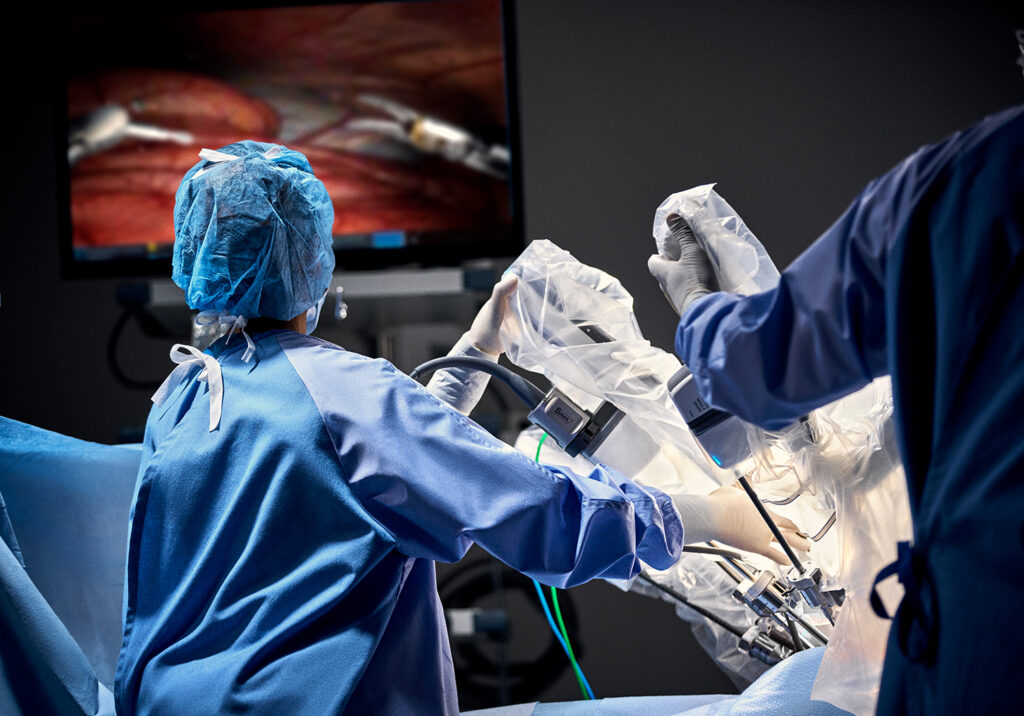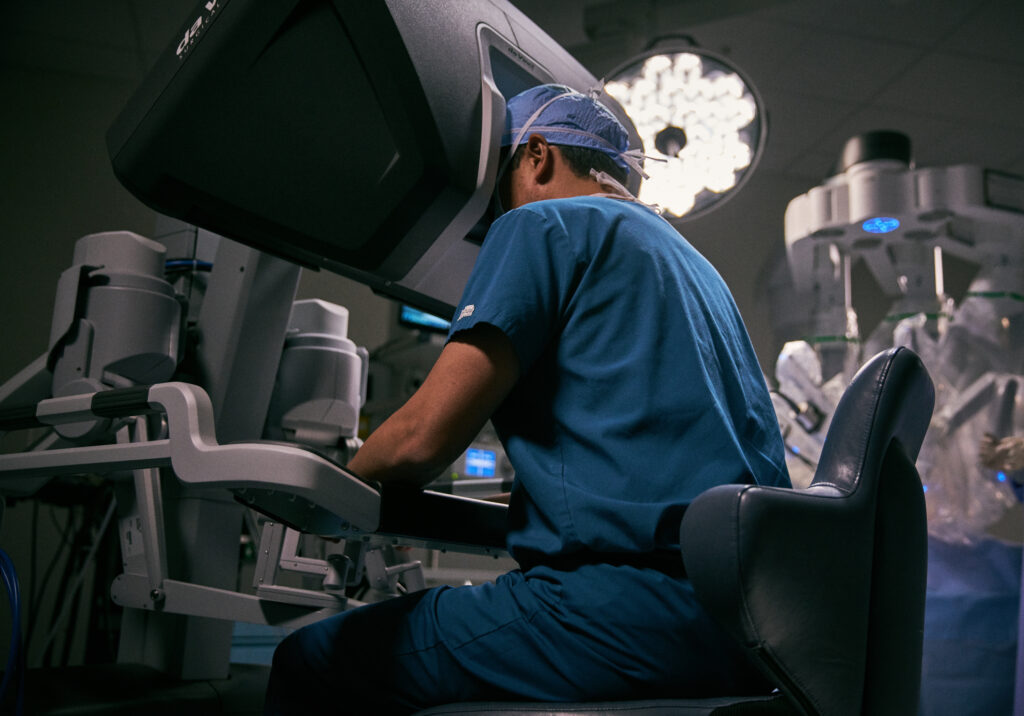Robot-assisted surgery represents a transformative advancement in medical technology, blending the precision and dexterity of the human hand with the sophisticated capabilities of a robotic da Vinci surgery system. The da Vinci Surgical System, pioneered by Intuitive Surgical, is at the forefront of this revolution, enhancing surgeon accuracy, improving patient outcomes, and promoting quicker recovery times through minimally invasive surgery.

Overview of the da Vinci Surgical System
History and Development
The da Vinci surgery robot was introduced in the late 1990s, marking a new era in surgical procedures. Developed initially with military applications in mind, it quickly became a cornerstone technology in minimally invasive surgeries by the early 2000s. Today, over 7 million surgeries have been performed globally using da Vinci systems, highlighting its widespread acceptance and trustworthiness in the surgical community.
Components and Functionality
The da Vinci Surgical System consists of three main components:
- Surgeon Console: This is where the surgeon operates, controlling interactive robotic arms with exceptional precision.
- Patient-side Cart: Houses the robotic arms, which hold specialized surgical instruments, mirroring the surgeon’s hand movements exactly.
- Vision System: Delivers a magnified 3D HD view of the surgical area, vastly surpassing traditional visualization methods.
Advantages of da Vinci Robotic Surgery
Enhanced Precision
The da Vinci system translates the surgeon’s movements into micro-movements of robotic instruments, enabling delicate, precise surgeries beyond the capabilities of the unaided human hand. This improved precision significantly reduces damage to surrounding tissues.
Minimally Invasive Approach
Robot-assisted surgery through the da Vinci system typically involves smaller incisions than traditional surgery, reducing blood loss and postoperative pain. Patients often experience shorter hospital stays, faster healing, and quicker returns to daily activities compared to traditional open or laparoscopic surgery.
Improved Visualization
Surgeons operating the da Vinci system benefit from enhanced 3D visualization, allowing clearer anatomical views. This facilitates intricate procedures that would otherwise be challenging or even impossible with conventional methods.
Patient Outcomes
Clinical studies consistently show improved patient outcomes with da Vinci robot surgery, including lower complication rates, reduced blood loss, and quicker recoveries compared to conventional surgical methods.
Applications of the da Vinci System

The da Vinci robot supports various surgical specializations:
- General Surgery: Including gallbladder removals (cholecystectomies) and hernia repairs.
- Cardiothoracic Surgery: Mitral valve repair, coronary artery bypass grafting, and lung resections.
- Urologic Surgery: Prostatectomies and kidney operations, significantly improving outcomes in prostate cancer treatment.
- Gynecologic Surgery: Procedures such as hysterectomies and myomectomies often result in fewer complications and quicker recovery.
- Bariatric Surgery: The da Vinci robotic bariatric surgery provides enhanced outcomes for weight-loss procedures by offering precise handling of tissues, reducing complications, and facilitating quicker patient recovery.
Leading Medical Centers
In Texas, institutions like BMI of Texas are pioneers in adopting da Vinci robot-assisted surgery. At BMI, the highly skilled surgical team leverages the da Vinci X system, particularly in bariatric procedures, achieving consistently positive patient outcomes.
Specialized Procedures in Texas
Common surgeries performed using the da Vinci system in Texas include gastric bypass, gastric sleeve, colorectal surgeries, and urological procedures, with BMI of Texas specializing in minimally invasive bariatric surgery, offering patients less invasive, safer options for significant weight loss.
Patient Testimonials
Patients treated through da Vinci robotic bariatric surgery at BMI of Texas frequently report significant improvement in their quality of life, emphasizing quicker recoveries, minimal pain, and substantial weight loss achievements. Their personal experiences underline the value of robot-assisted procedures, reflecting broader satisfaction trends among those opting for robotic surgery.
Considerations and Limitations
Eligibility Criteria
Ideal candidates for da Vinci robotic bariatric surgery typically have a BMI of 35 or higher, coupled with obesity-related conditions like diabetes or heart disease. Individuals should be evaluated thoroughly to confirm they meet the health requirements and to understand the long-term commitment required, including lifestyle changes post-surgery.
Cost Implications
The da Vinci Surgical Robot itself represents a significant investment, often costing hospitals between $1.5 to $2.5 million. Surgical costs to patients vary based on procedure complexity, surgeon fees, hospital charges, and insurance coverage. Fortunately, many insurance providers recognize robot-assisted surgery as standard, offering coverage similar to traditional surgeries.
Frequently Asked Questions (FAQs)
What surgeries does the da Vinci robot do?
The da Vinci robot facilitates general, cardiothoracic, urologic, gynecologic, and bariatric surgeries, among others.
How successful is Da Vinci robotic surgery?
Clinical data indicate high success rates, marked by reduced complication rates, shorter hospital stays, and quicker patient recoveries compared to traditional surgical methods.
Is the da Vinci robotic surgery safe?
Yes, da Vinci robotic surgery is considered safe, with extensive clinical validation showing risks comparable to or lower than traditional surgery.
The da Vinci robot-assisted surgery platform offers remarkable advancements in surgical care, significantly enhancing precision, patient safety, and recovery. At BMI of Texas, we specialize in employing this cutting-edge technology for bariatric procedures, delivering consistent, positive results for our patients. If you’re considering robot-assisted surgery, BMI of Texas can guide you every step of the way, ensuring informed decisions and exceptional care.

